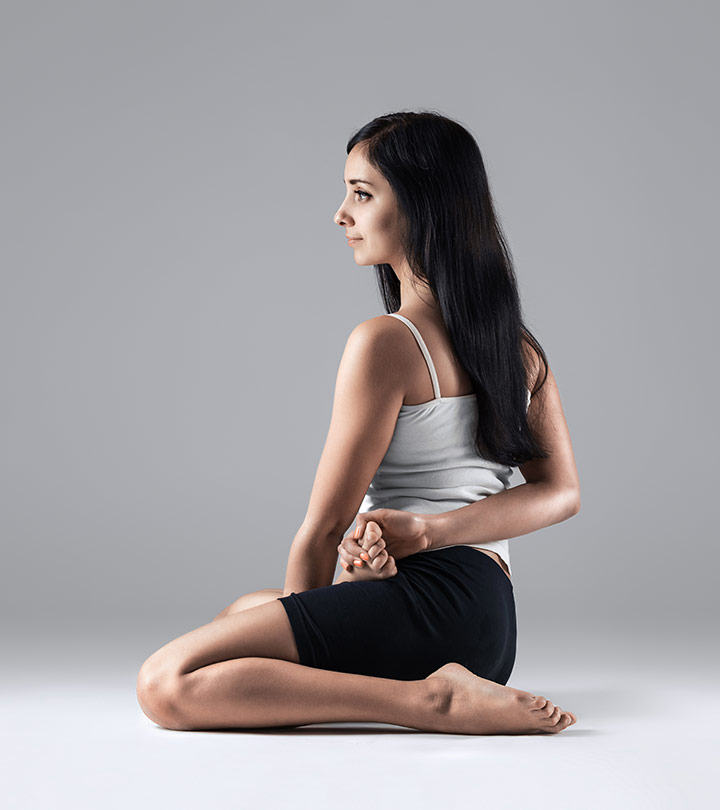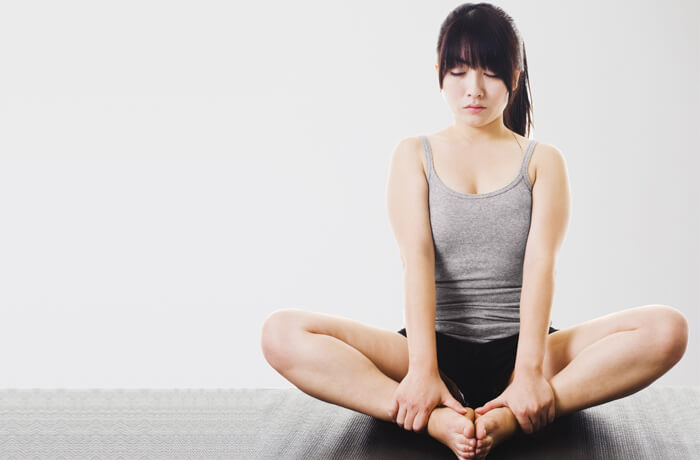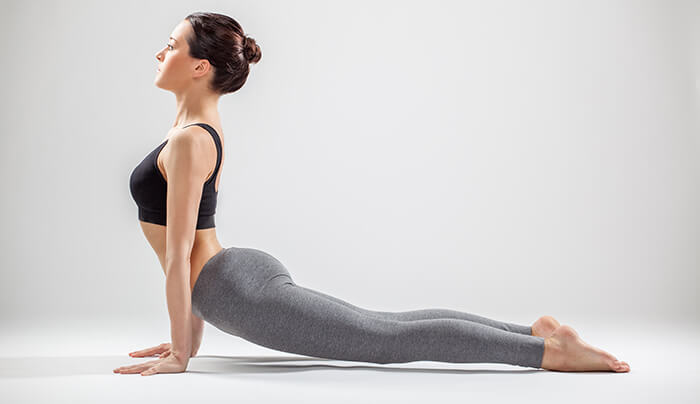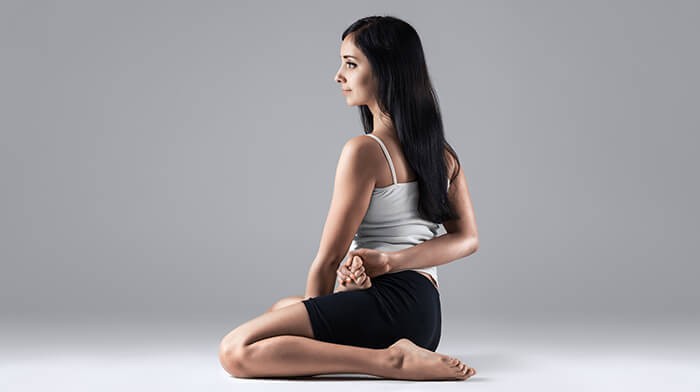Are
anxiety and weight gain unwelcome companions in your life? They can be
particularly burdensome for someone with ovarian cysts and PCOS. Sending
them packing is surely on your to-do list, but did you know you can
manage it better with yoga? Take a look at this post and find out how
yoga can help PCOS.
Yoga
helps manage the symptoms of PCOS with its relaxation exercises. The
poses help regulate the functioning of endocrine glands, thereby helping
resolve weight, infertility and psychological issues. Here are the best
yoga poses for women dealing with ovarian cysts.Yoga and PCOS:
Anxiety is a major cause for polycystic ovarian syndrome (PCOS), a hormonal disorder. It affects about 5% to 10% of the female population today. The disorder manifests symptoms such as irregular menstrual cycles, ovarian cysts, infertility, weight gain, hair loss, mood swings, abdominal bloating and others. Causes for PCOS also range from irregular lifestyles to high stress and strain. It is for this reason that experts suggest anxiety reduction as the best cure for PCOS and ovarian cysts.1. Butterfly Pose:
- Sit on the floor in a lotus pose.
- Bend your knees and make the soles of your feet touch each other.
- Try to position your legs in such a way that they are placed as close to the pubic area as possible.
- Pull the inwards as much as possible.
- Keep your back straight and hold the feet with your hands.
- Breathe deeply, and as you exhale try to push your knees down towards the ground with your hands.
- Stay within your comfort level as this requires practice.
- Allow the knees to come back up as you exhale in a flapping motion.
- Repeat the process for 15 to 20 times.
2. Reclining Butterfly Pose:
This pose is similar to the butterfly pose, but is performed lying down. It is extremely relaxing and also stimulates the abdominal organs.- Start with the position of the butterfly pose.
- Slowly, lean back and lower your upper body as you exhale.
- Using your hands for support, balance the back of your pelvis and lower back.
- Bring your torso to the floor until your back touches the floor.
- You can use a pillow to support your head and neck.
- Keep your arms at your sides with the palms up.
- At this point the knees are facing away from the hip, with the feet facing towards the pelvis.
- Try not to stretch the thigh muscles too hard. Let the knees hang in the air and breathe deeply for 10 minutes.
3. Cobra Pose:
The cobra pose relieves anxiety and stress besides improving blood circulation.- Begin by lying down on the stomach, forehead facing the floor.
- The feet should slightly touch each other, while the hands are under the shoulders, palm down and parallel to each other.
- On an inhalation, lift your chest and head, until your navel.
- Use the support of your hands to keep your upper body off the floor.
- As you breathe deeply, stretch back and feel your spine curve.
- Keep the shoulders downwards and relaxed, while the elbows can be slightly bent.
- Maintain the pose for as long as you are comfortable.
4. Bharadvajasana:
Also called the Bharadvaja’s twist, this pose helps to improve metabolism and regenerates abdominal organs. This pose is particularly suited for pregnant women.- Sit on the floor and stretch the legs before you.
- Relax your hands at your side and bend your knees towards the left hip.
- Now, the weight of your body is resting on the right buttock.
- As you breathe, lengthen your spine as twist your upper body as much as possible. Use the right hand placed on the floor for balance.
- Press the weight of your body from the hip towards the floor.
- Bend slightly in this position and feel the pull from the base of your spine to the head.
- Hold the position for a few minutes and repeat the twist on the other side.
5. Chakki Chalanasana:
This pose is called ‘moving the grinding wheel’ and has many benefits. Importantly, it helps improve the function of many abdominal organs.- Sit on the floor, keeping your legs wide apart.
- Bring hands together, interlock fingers and turns palms outside.
- Extend the arms outward so that the backs of the hands are facing you and the elbows are straight.
- Here, start moving the hands in a circular motion horizontal to the ground, as if using a grinding wheel.
- Bend at the waist using the lower back. Remember to keep the arms straight and not to bend the elbows.
- Inhale when hands come towards you and exhale when they move outwards.
- Move forwards and backwards in large circular movements, covering the toes.
- Repeat the process for 10 to 15 times in both clockwise and anticlockwise directions.
Source Click here





Comments
Post a Comment